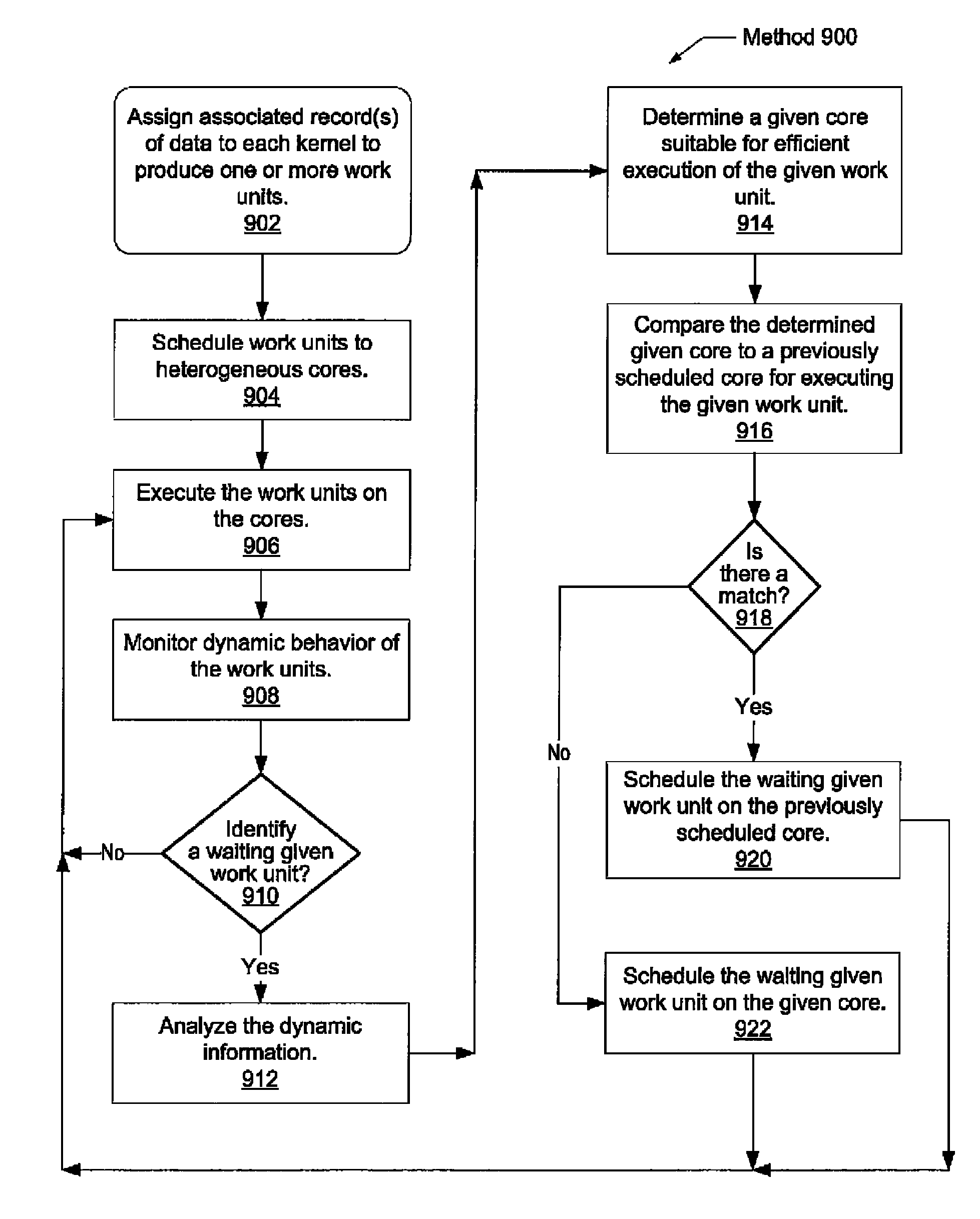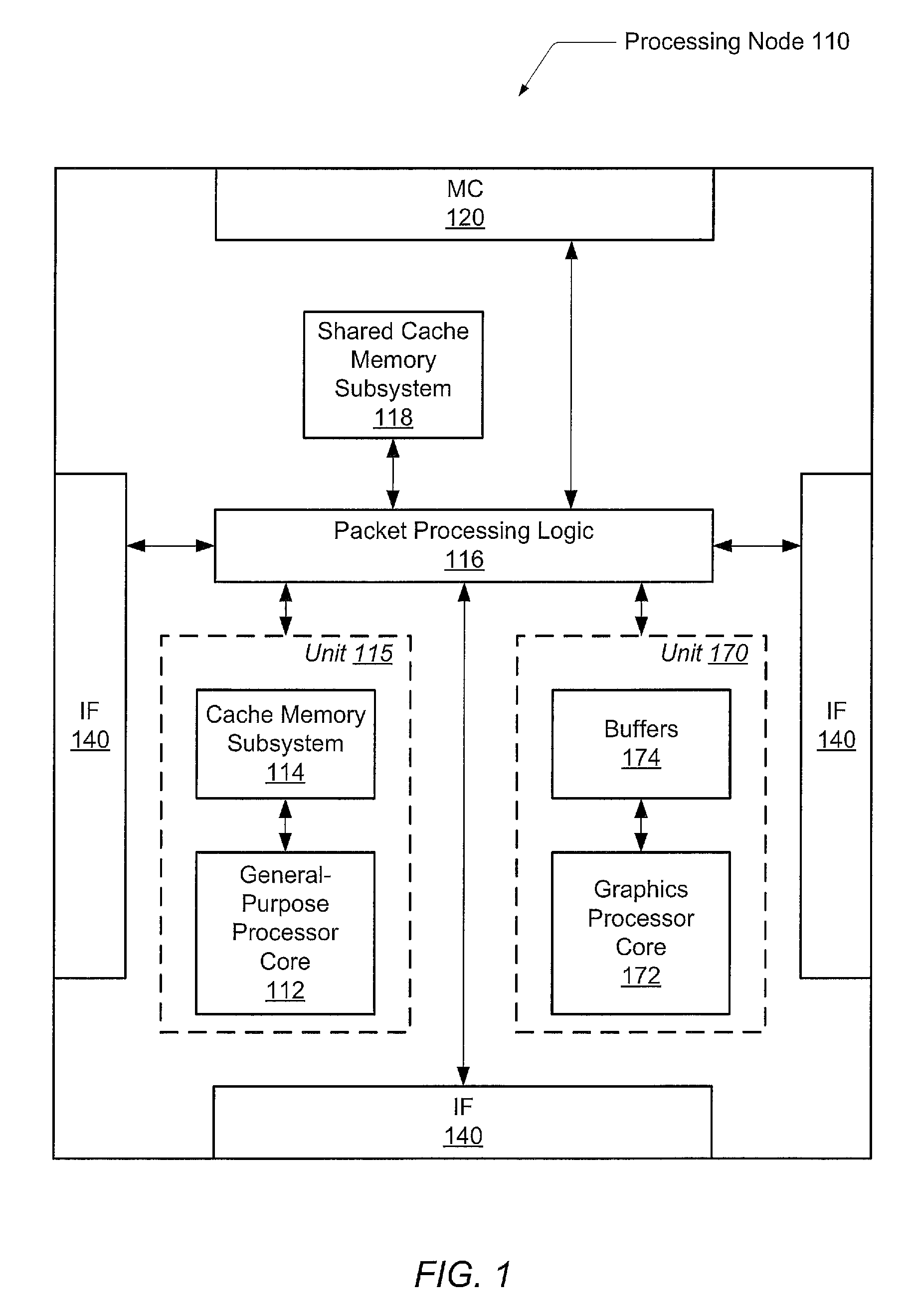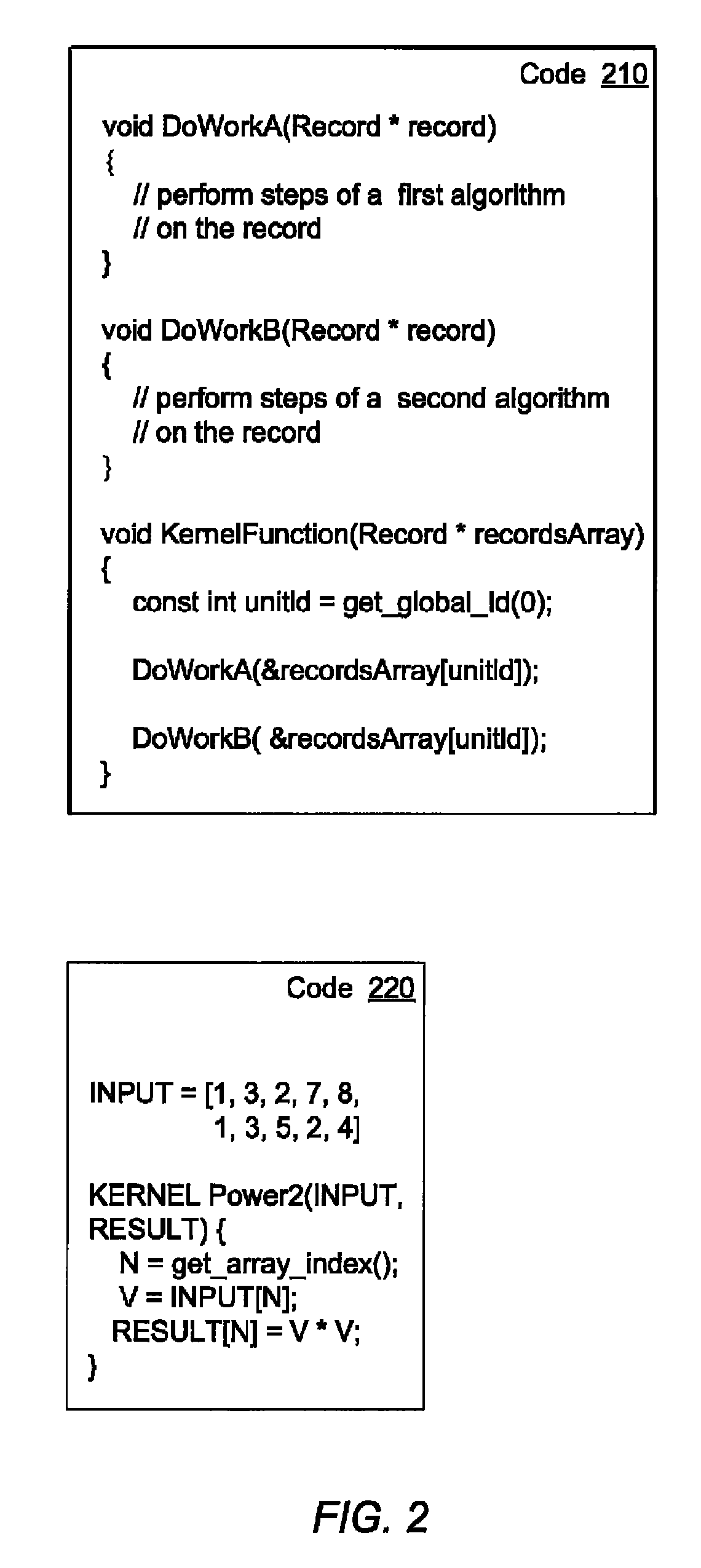Automatic load balancing for heterogeneous cores
a load balancing and heterogeneous core technology, applied in the field of computing systems, can solve the problems of limiting portability and performance, delay in the deallocation of shared resources,
- Summary
- Abstract
- Description
- Claims
- Application Information
AI Technical Summary
Benefits of technology
Problems solved by technology
Method used
Image
Examples
Embodiment Construction
[0008]Systems and methods for performing efficient automatic scheduling of the execution of work units between multiple heterogeneous processor cores are contemplated.
[0009]In one embodiment, a processing node includes a first processor core with a first micro-architecture and a second processor core with a second micro-architecture different from the first micro-architecture. In one embodiment, the first micro-architecture is a general-purpose micro-architecture and the second micro-architecture is a single instruction multiple data (SIMD) micro-architecture. The processing node includes a memory coupled to each of the first and the second processor cores. The memory stores a computer program comprising one or more compute kernels, or function calls. As a compiler traverses the instructions of a given function call, the compiler is configured to compute pre-runtime information of the given function call. A scheduler within an operating system (OS) produces one or more work units by...
PUM
 Login to View More
Login to View More Abstract
Description
Claims
Application Information
 Login to View More
Login to View More - R&D
- Intellectual Property
- Life Sciences
- Materials
- Tech Scout
- Unparalleled Data Quality
- Higher Quality Content
- 60% Fewer Hallucinations
Browse by: Latest US Patents, China's latest patents, Technical Efficacy Thesaurus, Application Domain, Technology Topic, Popular Technical Reports.
© 2025 PatSnap. All rights reserved.Legal|Privacy policy|Modern Slavery Act Transparency Statement|Sitemap|About US| Contact US: help@patsnap.com



